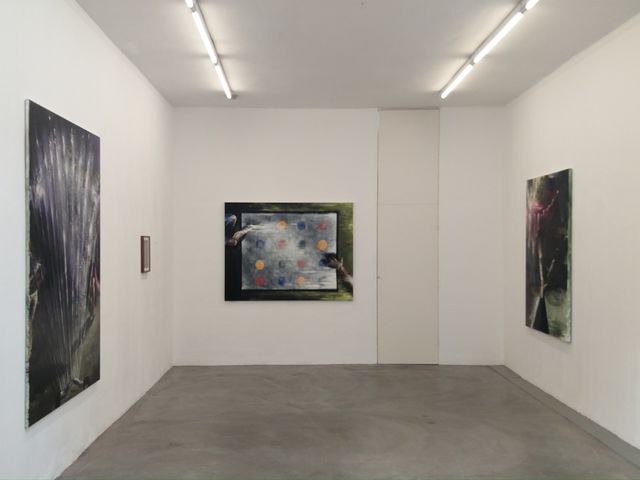

Rapid Repulsion is Line Gulsett's second solo-exhibition at TORCH gallery. The exhibition will feature a selection of recent large- and small scale canvasses in addition to drawings with oil pastel on black paper. A rapid, pulsating stream of images without notable substance passes before our eyes. It offers momentary comfort, a distraction at least, but becomes unsettling once the separate images are revisited via our memory. Small but significant imprints are continuously added to the fluid neural network of processes that define our memory. Together they can create a repulsive shallowness experienced as a homogeneous mass of virtual impressions. Weightless representations of matter float in a virtual realm without a beginning or an end. They lack a past, present or future tense. The digitized world can be seen as an off-putting chaos of nearly identical identities behaving like Brownian particles in an almost limitless space. Rapid Repulsion, the title of Line Gulsett's upcoming exhibition at TORCH gallery, describes a contemporary environment that seems especially hostile to those who aim to create a more lasting impression with paint on a canvas.
Prikkedøden (2016, 170 x 130 cm, Oil on canvas) is an exemplary piece for her practice. A white playmat with brightly coloured dots is seen from above. This relic of a past game seems to hover on a somewhat threatening black and bright green void. It covers most of the canvas. Without the addition of some figurative elements one might mistake the piece for a strictly abstract composition. However, the dotted playmat is flanked by what appear to be the rapidly moving limbs of a couple of children residing just outside the frame. Their movement is suggested by fleeting streaks of white paint. The entire piece seems to be covered in a translucent film resembling an often used cinematic strategy to represent reliving a memory. There is a threatening tone to this artwork, as if something is trembling underneath the painterly surface.
In her work, Line tries to pinpoint the moments that are of formative importance to the growth of a singular identity. Children's intuitive games and playful interactions are compared with the awkward social disconnect that is often part of adulthood. She also addresses the memory of childhood, including all the angst and desires of belonging while simultaneously striving for a certain heroic individuality. She describes the way this recollection of a fragile period in ones life is always altered by a current state of mind. She attempts to paint the way intense feelings can distort the experience of time and space itself. These thoughts take shape in compelling canvasses where formal abstraction and art historical references share a pictorial space with running children and the typical attributes of activities like hopscotch, skipping and swimming.